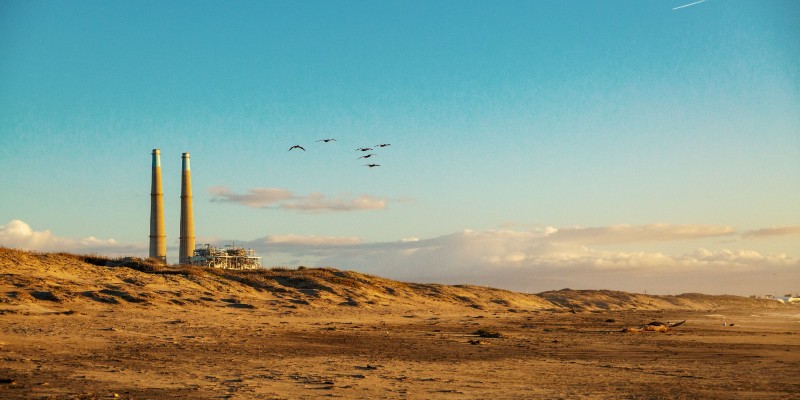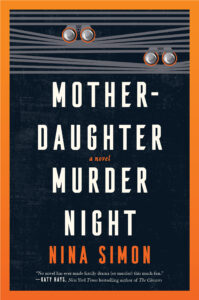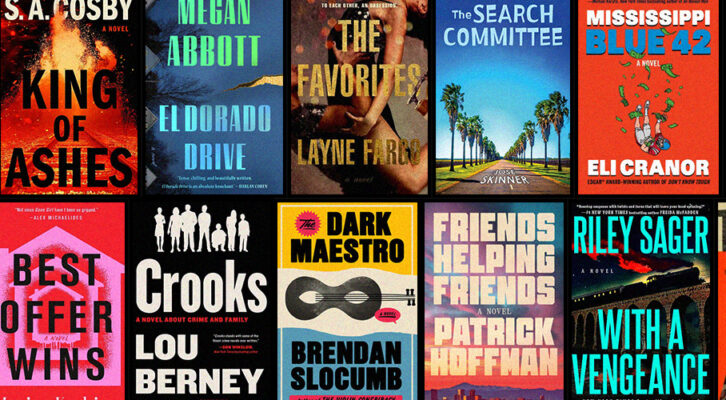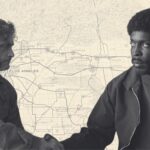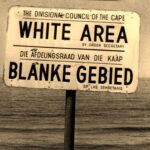“I want to talk about land as power.” I first heard those words while jogging along the coast in Santa Cruz, California, listening to a recording of Attica Locke’s keynote address at Noirwich 2020.
I had come to Locke’s speech because I had a problem. I was working on my first novel—a mystery. I had a family of lovable amateur detectives. I had a dead naturalist washed up in a marine preserve. But I didn’t yet have a motive for murder.
Attica Locke is one of my crime writing heroes. I’ve always admired her ability to use a clear-cut, contemporary crime—the murder of a farmworker, the death of a lawyer—to explore a deeper, systemic issue. In her Noirwich keynote, she discussed the surprising link between all her crime novels: real estate. As she put it: “the tangible bloody crimes at the center of [my] stories are almost always masking larger crimes about land use, land ownership, and the power that’s bestowed by each.”
I heard that, and something clicked.
The intersection of land and power is a constant topic of conversation in my family. I spent decades working in nonprofit museums and community centers, advocating for equitable access to public space. I’m fascinated by battles over public land: who controls it, who uses it, who feels welcome there.
These issues are as present in parks and wilderness spaces as they are in town plazas and city halls. Conservationists strive to do good, but protection of the great outdoors is often laced with classicism, racism, and exclusion. Wild places aren’t always as open and free as they appear. Yes, there are trails and picnic tables. But there are also often rangers with guns. There are signposts with long lists of what you can’t do there. There are plaques thanking wealthy donors who got tax write-offs for deeding land (land they bought? land they stole?) to the community.
These are contradictions I know well, and I was hungry to write about them. I took another look at my story’s setting. Mother-Daughter Murder Night takes place in the Monterey Bay, where I live. The story centers on Elkhorn Slough, a national marine preserve populated by fuzzy otters, fat harbor seals, and ghoulish jellyfish. It’s surrounded by berry farms, research stations, an abandoned power plant, and a marina. It’s the perfect place for birdwatching and paddleboarding. And murder.
I realized I’d been too narrowly focused on the slough’s natural beauty and eerie surroundings. It was time to dig deeper, to look beyond the otters and gnarled Monterey pines. I started asking questions about the human history of the land. How had the slough become a public place? Who fought over it? What battles were in the past, and which still raged at present?
“Look for the crime behind the crime.” Attica Locke’s words echoed in my head as I expanded my research. Locke’s crime stories take place in contemporary Texas, against the history of slavery and the Great Migration. Mine takes place in contemporary California, against the backdrop of Spanish-Mexican colonization and westward expansion. Monterey Bay is the home of John Steinbeck, whose most famous novels chronicled the criminal oppression of people laboring in California’s fields.
I wasn’t planning to write directly about the injustices of the past. But I knew these historic crimes were baked into the soil of my story. I just had to dig.
While I didn’t find murders in the history of Elkhorn Slough, I did find crime. A massive ranch bordering the marsh—one I thought I’d invented for the novel—turned out to be a real place, with a real rancher, who generously offered to share some historical documents about the property with me. Amidst old family trees and surveyors’ maps, I found articles about Joseph Roadhouse, a British-American homesteader and “the first settler” of the area, who arrived in 1852.
That year, Roadhouse laid claim to 800 acres of prime real estate. He named the wetlands Elkhorn Slough for the shape of the winding water. Then, one day in 1853, a band of Spanish-Mexicans arrived and attempted to drive him out.
According to two historical accounts, here’s what happened:
One day as the men were working on the buildings, a band of Mexicans, seeing the activity, approached to drive them off the land they still considered their own. Mr. Roadhouse, upon seeing their approach in the distance, was known to say, “It looks as if we will have to fight. I wish we had an American flag!” Whereas his father-in-law replied, “I do have one and a big one! It’s in my trunk on the wagon.”
They quickly brought it out and nailed it to a pole which they pushed through and above a large oak tree. The Mexicans seeing the flag of the new government and evidently thinking it a U.S. Army installation, changed their minds and went away. Thereafter that particular oak tree came to be known to the family as the “Liberty Tree.”
These two short paragraphs stuck like gum in my brain. It was the tone as much as the content that got me, as if the author was recounting the antics on an episode of a kooky sitcom about westward expansion.
What really happened that day in 1853? Were the Mexicans the criminal invaders or was Roadhouse the criminal squatter? Was it a conflict between individuals, or between governments? What happened the year before, when Roadhouse arrived and settled there, “taking claim” to the land with the backing of the US government? What happened to the Native Amah Mutsun and Rumsen people in the area? What other crimes were buried under the soil?
I started looking at every story about land with new eyes. Over the decades, I found crimes of theft, abuse, bias, and state-sanctioned neglect. I found an environmental group gatekeeping access to supposedly public land. A venture capital firm swallowing up family farms. A family suing to invalidate the will of a historic patriarch who wanted to give his land to the homeless. Just last year, a catastrophic flood hit the town of Pajaro, just north of Elkhorn Slough. Thousands of farmworkers lost their homes and all their belongings. It was widely reported that the river levees broke because of decades of racist government disinvestment in migrant farmworker communities.
This is the contested soil in which I set my mystery: a story about a ranch in a marine preserve, and many stakeholders fighting over its future.
The land surrounding Elkhorn Slough is a scarce, valuable resource. Everyone agrees on that. But what is the best expression of that value? Should it be preserved for the wild animals that live there? Should it be returned to the people from whom it was stolen? Should it be accessible to the farmworkers who made it productive? Should it be an educational site for ecotourists? A recreation site for fishermen? Should it be developed into housing? Should it plump the balance sheet of venture capitalists? What has the land been valued for in the past, and how might that value change in the future?
I don’t have the answers to these questions. But I enjoyed wrestling with them in the pages of Mother-Daughter Murder Night. Like all questions about land and power, they’re fertile grounds for murder.
*

